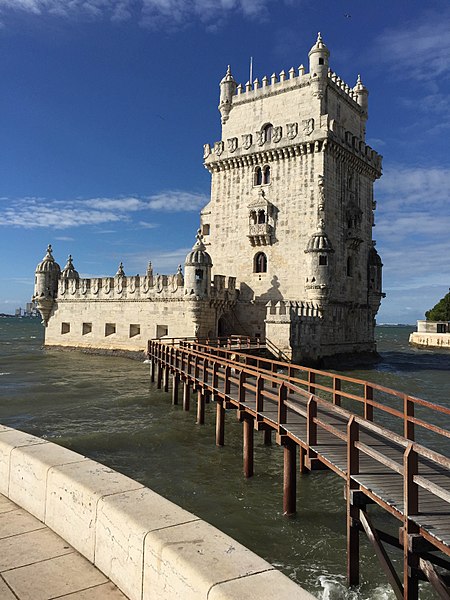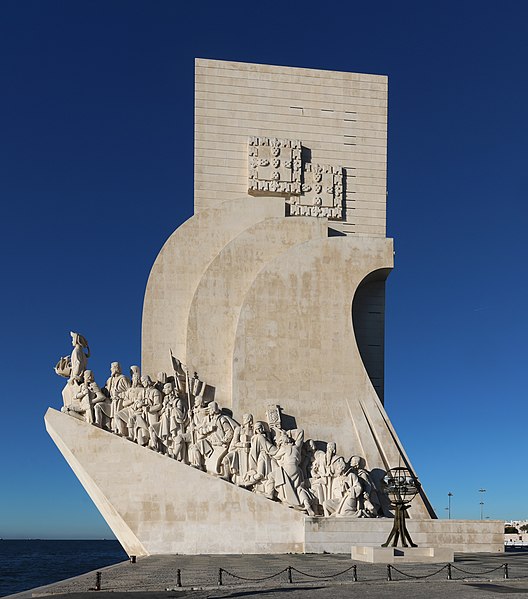Belém Tower, officially the Tower of Saint Vincent is a 16th-century fortification located in Lisbon that served as a point of embarkation and disembarkation for Portuguese explorers and as a ceremonial gateway to Lisbon. This tower symbolizes Portugal's maritime and colonial power in early modern Europe. It was built during the height of the Portuguese Renaissance, and is a prominent example of the Portuguese Manueline style, but it also incorporates other architectural styles, such as the minarets, which are inspired by Moorish architecture. The structure was built from lioz limestone and is composed of a bastion and a 30-metre (100 ft), four-storey tower.
The quarter façade of the tower on the bank of the Tagus river
The tower was classified as a UNESCO World Heritage Site in 1983 and included in the registry of the Seven Wonders of Portugal in 2007.
Portuguese presence in India, the Gulf of Bengal and the Himalayas (maximum extent) between the 15th and 17th centuries
French ships exchanging fire with the tower at the Battle of the Tagus during the Liberal Wars (1831)
Lisbon is the capital and largest city of Portugal, with an estimated population of 548,703 as of 2022 within its administrative limits and 2,871,133 within the metropolis. Lisbon is mainland Europe's westernmost capital city and the only one along the Atlantic coast, the others being on islands. The city lies in the western portion of the Iberian Peninsula, on the northern shore of the River Tagus. The western portion of its metro area, the Portuguese Riviera, hosts the westernmost point of Continental Europe, culminating at Cabo da Roca.
Image: Lisbon (36831596786) (cropped)
Image: Lisbon 129 (36502263701)
Image: Lisbon Praça do Comércio BW 2018 10 03 13 33 44 s
Image: Belem Padrao dos Descobrimentos








